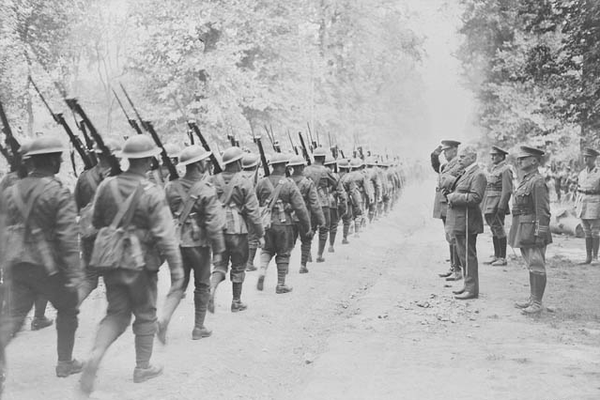In a recent interview, former CIA director and retired Gen. David Petraeus (nicknamed “General Betray-us” back when being antiwar was still fashionable on the left) gave a hypothetical response to what would happen if the Russians used a tactical nuclear weapon against the Ukrainian armed forces. The United States, per Petraeus, would immediately lead NATO in a full-scale conventional war against Russia. All of Russia’s forces in Ukraine, and its entire Black Sea fleet, would be destroyed in short order.
Meanwhile, an unnamed Pentagon official told Newsweek that far from launching a full-scale war, the United States could simply bomb the Kremlin, thus decacipating Russia in one stroke. Without Vladimir Putin, the assumption seems to be, further war would be impossible. The Russian embassy in Washington has denounced such talk as “delusional” and “reckless.”
While the immediate tactical-nuke scare bears echoes of the Cold War and the Cuban Missile Crisis, the West’s preferred historical-cum-moral framing of the conflict harks back to World War II: A tyrant lusts for European land and domination, and the only question is whether the good and the just can muster the resolve to defeat his evil ambition.
Incessant invocations of World War II—where every opponent is another Hitler, every war the invasion of Poland, every advocate of restraint another Neville Chamberlain—have blinded us to the more relevant historical parallel for making sense of the current showdown: namely, the initial escalation leading into World War I, which saw an array of nations dragged into the conflict by default due to their prior alliances—all of them disastrously underestimating the length and severity of the conflict (sound familiar?).
The parallels go deeper. The immediate prewar period saw a structurally weakened great power—Austria-Hungary—beset on all fronts. The Hungarians had at several times tried to escape from being yoked to Vienna, and while they failed to achieve independence in 1848, they had their sights set on carving out even more autonomy. To the south, a hungry Italy eyed the parts of Austria-Hungary that it thought ought to belong to it, and to the east, most fatefully of all, the peoples of the Balkans were plotting their own independent course.
In other words, Austria-Hungary was slowly falling apart. Outside it were various rivals plotting the empire’s demise, and inside lurked a plethora of nationalist malcontents, each hoping to gain freedom or glory from blowing it up. The result was that Austria-Hungary felt it had no choice but to act extremely tough, especially in the Balkans, and especially against the Serbian nationalists. The Austrians couldn’t let any enemy be successful.
“World War I was less a story of hubris and more one of imperial desperation.”
The lead-up to World War I was less a story of hubris and more one of imperial desperation. There were simply too many leaks that Vienna was trying to plug at the same time. The parallels to the contemporary United States should be obvious at this point. America, just like Austria-Hungary, is beset from both the outside and the inside. Across the Atlantic and the Pacific, rival powers lie in wait for a moment of weakness. But as with Austria-Hungary on the eve of World War I, the United States can’t really afford another war. For one thing, the US Army has just acknowledged that it missed its recruitment targets by a whopping 25 percent, and that is after it repeatedly slashed both the targets and the standards for new recruits.
So what lesson can be drawn from the recent bluster from Petraeus and other officials? The central point here is that while this is all escalatory, it isn’t blindly so. Ukraine’s President Volodomyr Zelensky recently announced the country’s expedited application to join NATO, while filming himself signing said application. It was promptly rejected by both NATO chief Jens Stoltenberg and the diplomats at Foggy Bottom. In other words, Washington takes a less aggressive line in practice than it does in rhetoric. There is clearly no great appetite for unlimited war, even though the rhetoric is designed to make everyone think otherwise.
But it’s a fine line that the United States is walking. It isn’t easy to permanently scare your enemies while also giving off clear signs of weakness, and Washington is trying to do just this on two fronts. Sooner or later, bellicose rhetoric may end up backfiring, inspiring not deference but defiance from its intended targets. The world today looks more like the world just before the Great War than the one that ushered in World War II—and that is hardly good news.
